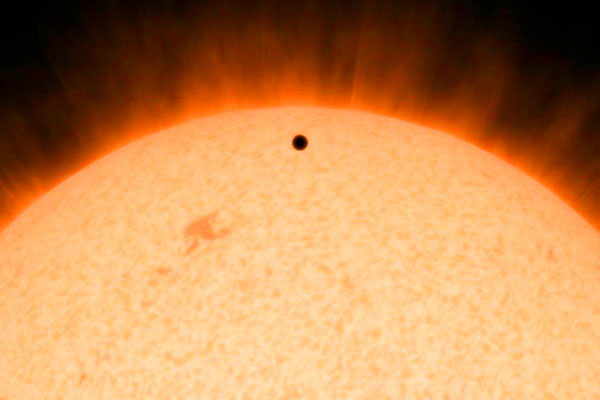The Space & Beyond Blog

Why exoplanets are difficult to find
Methods for detecting exoplanets
Because exoplanets exist outside our solar system, orbiting other stars, they can be hard to capture with a telescope. In fact, even Neptune, in our own solar system, is a blurry blue ball when viewed form Earth’s orbit. Because of this, it can be hard to find exoplanets.
The Transmit Method
Astronomers are able to find exoplanets because planets affect their stars in measurable ways. The two most widely used methods for detecting exoplanets are transits – the blinking method – or Doppler shifting – the wobble method. When a planet orbits its star, the planet will sometimes cross between it and Earth. This crossing is called a transit, and when it happens, the planet blocks a bit of the star’s light. It may be well under one percent of the light, but that’s enough for special telescopes to measure. If that star is blinking in a regular, cyclical pattern, that tells astronomers there’s a planet circling it – as well as the size (width) of the planet and how big its orbit is.
The Doppler Method
In the wobble method, astronomers rely on the fact that just as stars tug on their planets to keep them in orbit, planets also tug on their stars. So, as a planet circles, its star will wobble back and forth very slightly. This wobble is usually too small to see in an image, but it does show up as a wiggle in the spectrum, or color, of the star. Again, astronomers look for a pattern to that wiggle, which tells them how massive a planet is and how far away it orbits.
